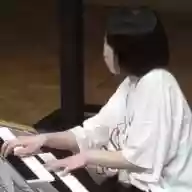“Japanese Traditions”: Japanese Festival Music (Jun Hōgaku)
Festival hayashi music is indispensable to Japanese festivals.
It’s music performed with traditional Japanese instruments—such as taiko drums, flutes, and small gongs—sounds that every Japanese person has likely heard somewhere.
Classified as pure traditional Japanese music, festival hayashi has long been performed and cherished at festivals across the country.
In this article, we’ll introduce a wide variety of such local festival hayashi!
Will your hometown’s festival hayashi be featured?
If you have information like “There’s also this kind of festival hayashi!”, please share it with us!
- Popular Festival Songs Ranking [2025]
- Traditional Japanese Music: Famous Pieces of Gagaku and Kagura. Recommended Traditional Japanese Music
- [Let's Enjoy Japanese Festival Songs!] Songs about festivals. Famous songs related to festivals.
- [2025] Bon Odori songs every kid knows! A roundup of fun festival tunes
- Japanese ondō: a seasonal tradition everyone can enjoy.
- Soran Bushi: The heart of Japan passed down through song
- Akita Ondo: The Heart of Japan Passed Down in Song
- [Local Songs] Recommended tracks packed with Japan’s nationwide classics and hometown pride
- [Traditional Performing Arts of Okinawa] A special feature on classic Eisa songs that make you want to dance
- [2025] A classic song themed around summer festivals. A song of summer memories.
- [Japanese Folk and Regional Songs] A Collection of Beloved Masterpieces from Across Japan, Brimming with Local Pride
- A Collection of Moving Shakuhachi Masterpieces | Beautiful Japanese Melodies That Stir the Heart
- Japanese rokyoku: the traditional Naniwa-bushi narrative song
“Japanese Tradition” — Japanese Festival Music (Hogaku) of Japan (11–20)
Meguro Hayashi

Meguro Hayashi is the festival music performed at shrines within Meguro Ward, such as Kumano Shrine and Hikawa Shrine.
It inherits the atmosphere of Kanda-bayashi, which is regarded as the principal style of festival music.
In addition to drums, it uses the shinobue flute and kane (hand gong) to play ten pieces, including Kamakura and Shōden.
Recognized as an Intangible Folk Cultural Property, its melodies evoke the traditional spirit of Japanese harmony.
Children also have opportunities to practice this music, and performances are presented at school events and at festivals such as the one at Kumano Shrine.
Shigematsu-ryu Festival Hayashi

Shigematsu-ryu Festival Music, indispensable to traditional Japanese festivals, is a performing art that originated in Tokorozawa in 1830.
It features a five-member ensemble consisting of a large drum, small drums, shō, and flute.
Its brisk tempo and the interplay between the two small drums enhance the music’s appeal.
Performed at local events such as Tokorozawa City’s Tokorozawa Festival and lovingly passed down through generations, this work invites you to feel the vibrancy of Japanese festivals.
You’ll surely find yourself thinking, “I’d love to hear this while taking part in a festival.”
Aomori Nebuta festival music

Nebuta-bayashi is the powerful festival music played at the thrilling Nebuta Festival, held every August in Aomori Prefecture.
The dynamic performance—driven by drums, flutes, and bells—leaves a strong impression that stands toe-to-toe with the giant floats called “Nebuta” that appear in the festival.
This music is mainly performed when the Nebuta are in motion.
Its highly rhythmic beat gets bodies swaying—not only locals from Aomori, but even first-time listeners.
It’s the kind of festival music that makes everyone there, from the handlers moving the Nebuta to the spectators, want to energize the celebration together.
Eisa

Eisa is one of Okinawa’s traditional performing arts, comparable to the Bon Odori on the Japanese mainland.
Each neighborhood’s youth association has its own style, and on the nights of the old Bon festival they parade through their communities while dancing.
The forms can be classified into several types; the oldest is said to be hand-dancing only.
Today, however, most youth associations perform Taiko Eisa centered on large barrel drums and small rope-tied drums.
The powerful drumbeats and shouts lift the spirit.
Akita Kanto Festival Music

The Akita Kanto Festival, held every year from August 3rd to 6th in Akita City, Akita Prefecture, is one of the three great festivals of the Tohoku region, alongside Aomori’s Nebuta Festival and Sendai’s Tanabata Festival.
Its festival music, known as Kanto-bayashi, has two styles: Nagashi-bayashi and Hon-bayashi.
During the festival, drums are placed on floats—decorated trucks—and performed atop the floats.
It seems to be tradition for two people to play a single drum together.
Sekiya Bayashi

Sekiya Bayashi, performed at the Shinjo Festival in Shinjo City, Yamagata Prefecture, has been carefully passed down as a source of local pride.
The powerful rhythms created by traditional Japanese instruments such as taiko drums, flutes, and shō play a vital role in heightening the festival atmosphere.
Registered by UNESCO as an Intangible Cultural Heritage in 2016, this festival music is cherished as a symbol of community unity.
If it’s difficult for you to attend the festival in person, try searching for performance videos on YouTube.
The dynamic performances are sure to set your heart racing.
“Japanese Traditions” Japanese festival music of traditional Japanese music (21–30)
Chichibu Festival Hayashi (Festival Music)

Chichibu Yatai-bayashi refers to festival music that is widely found throughout the Chichibu region of Saitama Prefecture, has been handed down in each district since old times, and has been performed at their festivals.
The instruments used are mainly shamisen, drums, flutes, and bells.
In the Chichibu Yatai-bayashi performed at the Chichibu Shrine festival in Chichibu City, Saitama Prefecture—famous as the Chichibu Night Festival—shime-daiko (tight-headed drums) and large drums are added.
It is said to be music that ensures the smooth movement of the festival floats, and the shime-daiko repeats a rhythmic pattern called “Sazanami-bayashi” (rippling-wave rhythm).






